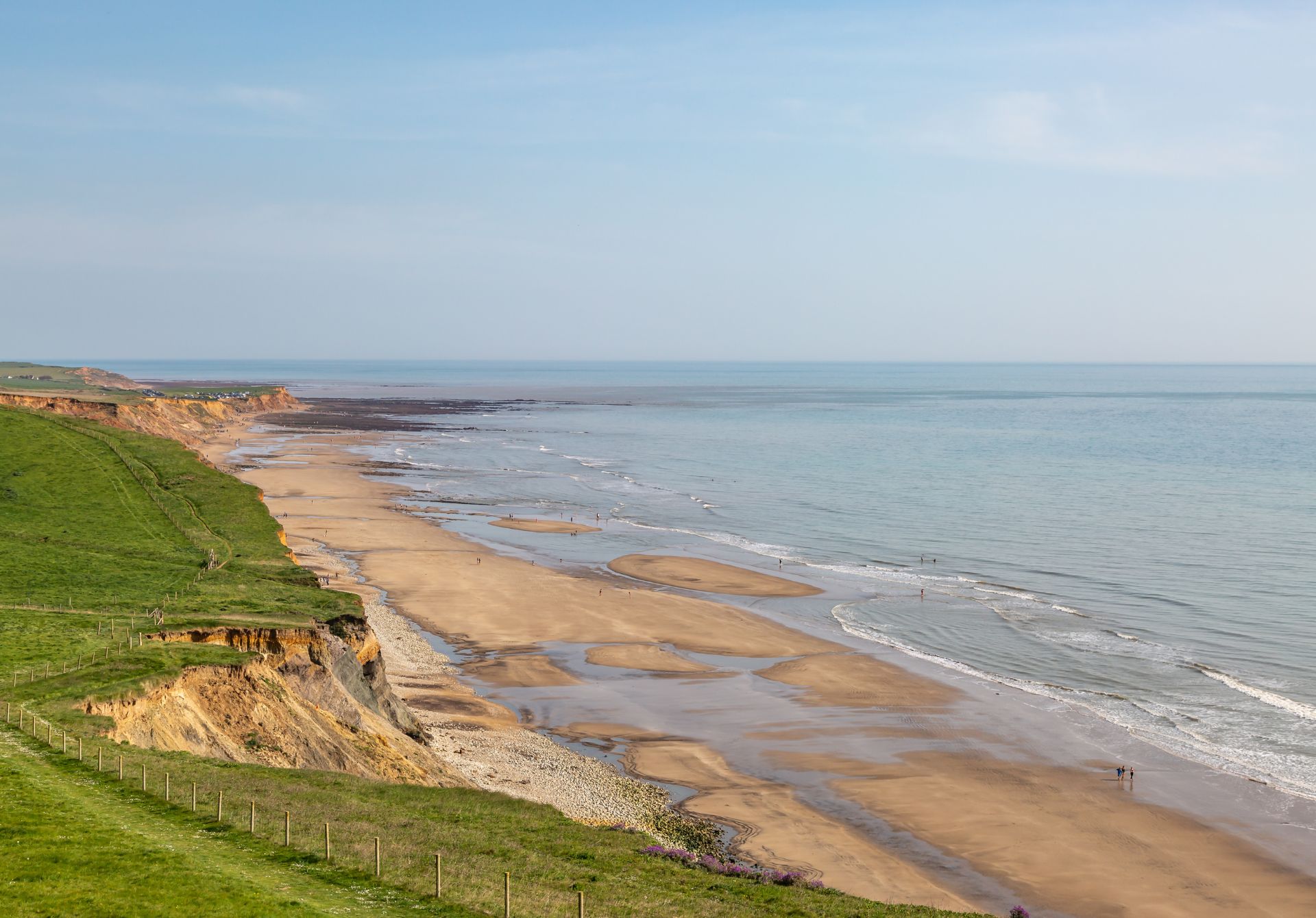Nestled on the southwest coast of the Isle of Wight, Compton Bay stands as a testament to the raw beauty of England’s coastline. This picturesque bay, stretching for nearly two miles, offers visitors a unique blend of natural wonders, geological marvels, and recreational opportunities. From its golden sands to its fossil-rich cliffs, Compton Bay has something to captivate every visitor.
Geological Significance
Compton Bay is renowned for its geological importance, particularly its exposure of the Cretaceous period. The bay’s cliffs, dating back approximately 110 million years, provide a vivid snapshot of Earth’s history.
Fossil Hunting Paradise
The eroding cliffs of Compton Bay have made it a prime location for fossil hunting. Visitors can find an array of fossils, including: 1. Dinosaur footprints: Visible at low tide, these trace fossils offer a tangible connection to the prehistoric inhabitants of the area. 2. Ammonites: These spiral-shaped fossils of extinct marine mollusks are commonly found along the shoreline. 3. Plant fossils: Remnants of ancient flora can be discovered in the clay beds.
Natural Beauty and Biodiversity
Beyond its geological wonders, Compton Bay boasts a diverse ecosystem that supports a wide range of flora and fauna.
Coastal Habitats
The bay’s varied habitats include:
- Sandy beaches: Home to numerous invertebrates and providing nesting sites for birds.
- Chalk grasslands: Supporting rare wildflowers and butterflies.
- Maritime cliff habitats: Offering refuge for seabirds and specialized plant species.
A survey by the Isle of Wight Wildlife Trust recorded over 200 plant species in the Compton Bay area, including several nationally rare and endangered species.
Wildlife Spotting
Visitors to Compton Bay may encounter: 1. Peregrine falcons nesting in the cliffs 2. Gannets and fulmars soaring overhead 3. Numerous species of butterflies, including the Glanville fritillary, found nowhere else in the UK outside the Isle of Wight
Recreational Activities
Compton Bay’s natural beauty and favorable conditions make it a popular destination for various outdoor activities.
Water Sports
The bay is particularly renowned for: 1. Surfing: With consistent waves, Compton Bay is considered one of the best surfing spots on the Isle of Wight. The Isle of Wight Surf Club reports that the bay attracts over 10,000 surfers annually. 2. Windsurfing and kitesurfing: The bay’s wind conditions make it ideal for these sports, especially during the summer months. 3. Swimming: Though swimmers should be cautious of strong currents, the bay offers refreshing waters during warmer months.
Land-Based Activities
For those preferring to stay on dry land, Compton Bay offers:
- Hiking: The coastal path along the bay provides stunning views and connects to the larger Isle of Wight Coastal Path.
- Paragliding: The cliffs above the bay are popular launch sites for paragliders, offering breathtaking aerial views of the coastline.
- Photography: The dramatic landscape and ever-changing light conditions make Compton Bay a photographer’s paradise.Compton Bay stands as a microcosm of the Isle of Wight’s natural beauty and geological significance. Its fossil-rich cliffs offer a window into Earth’s distant past, while its diverse habitats support a rich tapestry of life in the present. The bay’s recreational opportunities, from surfing to fossil hunting, provide visitors with unique ways to engage with this remarkable landscape.
As we look to the future, the conservation of Compton Bay becomes increasingly crucial. By balancing human enjoyment with environmental protection, we can ensure that this hidden gem continues to inspire, educate, and captivate generations to come. Whether you’re a nature enthusiast, a history buff, or simply seeking a beautiful coastal retreat, Compton Bay offers an unforgettable experience that encapsulates the best of the Isle of Wight’s natural world.

